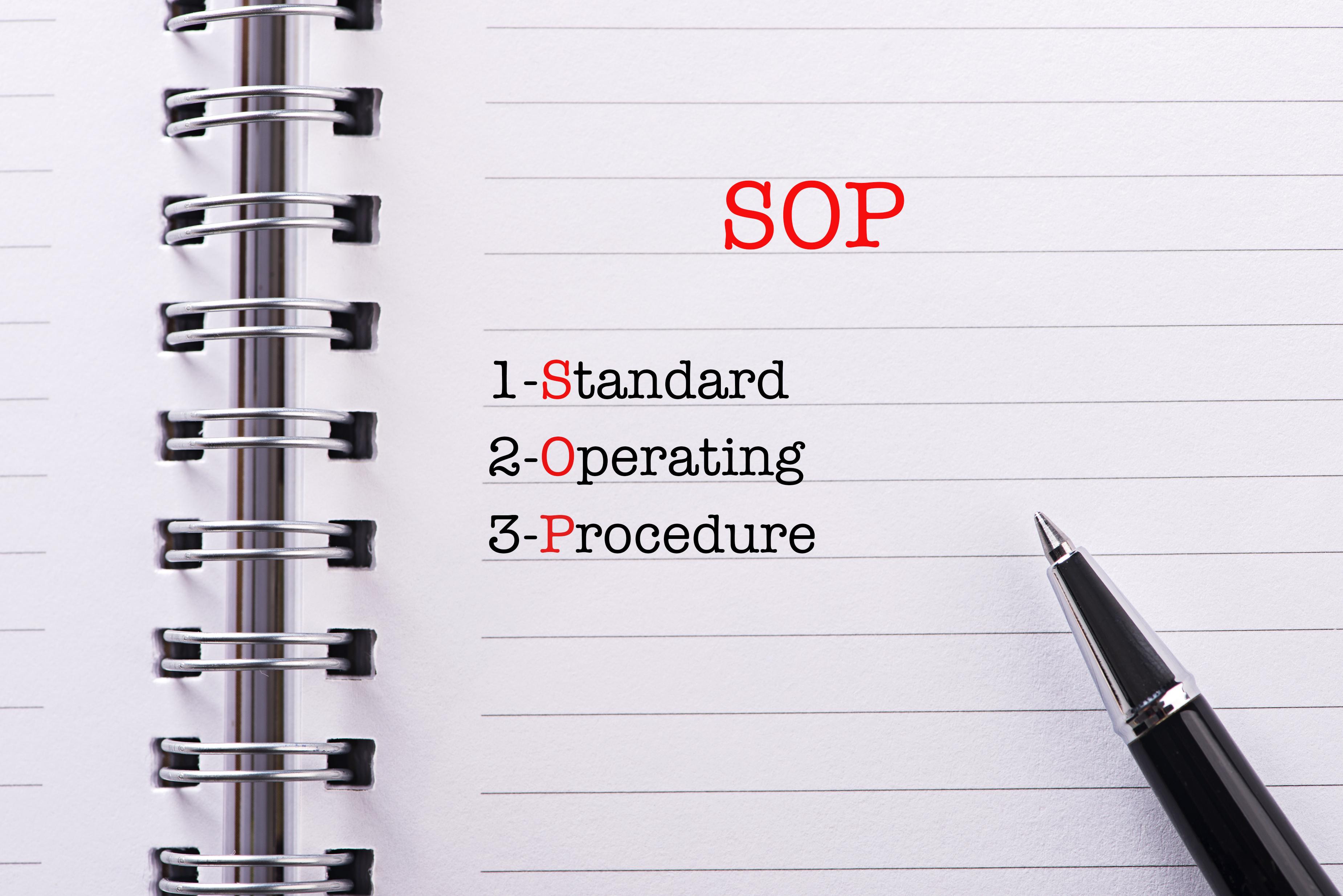
Understanding how things need to get done is essential to starting or improving your business. Standard Operating Procedure (SOP) is beyond relevant to complex companies and organizations. It helps your business determine who does what, where, how and why, leaving no room for errors.
Intro to Standard Operating Procedure
Standard Operating Procedures are written guidelines that describe how to perform a routine activity. They guarantee the consistency and performance of the business, adding the much-desired flexibility that is appealing to large numbers of employees and job-seekers.
The SOP has to be brief and easy to read and should contain action steps that are simple follow. By meeting this criterion, you will avoid a situation where a poor performance by an employee can be justified with the complexity of the procedure.
Implementing a Standard Operating Procedure can drastically help your business since it:
- Provides existing and new employees with all information about how they should perform a job properly;
- Generates and maintains consistency in the quality of the end result;
- Addresses safety concerns;
- Reduces the chances for miscommunication to a minimum;
- Ensures the transfer of knowledge.
Perhaps the most important feature of an SOP is the fact that is speeds up the integration of new employees. Employees in the initial phase of employment within the company/organization benefit greatly from the SOP since it helps them accomplish more in less time – the correct way.
Additionally, outlining their responsibilities will mean that they don’t have to guess as to how they should be performing their jobs or try and remember what you told them when they got hired.
Benefits of SOPs:
Implement Standardization
SOPs will help you implement standards in regard to certain activities within your company. You will achieve consistency in terms of how your business operates.
In addition, you will have a satisfactory end result, since the guidelines come from your personal expectations and goals in terms of performance.
Safe Working Environment
SOPs can help you create a safe environment for your team members by making the practices transparent.
They provide both existing and new employees with an insight into the ongoing activities within the organization and what is expected of them in terms of performance.
Valuable Internal Structure
SOPs provide a valuable structure for internal communication, in the sense that they tend to:
- Reveal what the best practices within the organization are;
- Provide background information regarding the development and changes within the management policy.
This enables employees to get more in tune with the dynamics of the organization, leaving little room for miscommunication.
Efficient Transfer of Knowledge and Skills
SOPs guarantee the transfer of knowledge and skills, as well.
In situations when a talented and experienced employee may either temporarily be out of work; permanently change their workplace or may retire for good, with the SOP, the organization will avoid a significant loss of accumulated knowledge and skill.
How to Develop SOPs: steps and tips

The SOP is specific in its nature, meaning: there is no one-size-fits-all formula for developing one.
A typical SOP must include:
- Purpose of operation;
- Equipment and materials required;
- Guidelines of how employees should operate.
The process of developing an effective SOP depends greatly on the inclusivity of all team members. It must take in the input of everyone who’s on board.
The SOP should encourage and allow employees to generate ideas; accept the SOP, and feel a sense of ownership in it, instead of it being imposed on them by management, without regard to their contribution to the company.
All organizations that implement SOPs will notice a higher level of employee efficiency and improvement of their operations.
In regards to an effective SOP implementation, here are a few steps you should follow:
-
Clarify the organization’s workflow by developing a list of your business processes
You want each SOP to cover the procedure of importance to the organization
-
Make the SOP as concise and easy to understand as possible
You want everybody on board to have a clear understanding of what is expected of them.
-
Provide adequate information in regards to performance.
You can achieve this by speaking with the people who actually perform on a daily basis.
-
Determine metrics against which SOPs can be judged.
The key metrics may be related to the performance or speed of execution of the tasks.
-
Communicate the SOPs to the team members.
You should consider implementing a training session to make sure that employees are capable of following instructions.
-
Optimize the SOPs
In order for the SOP to remain relevant and useful, you should maintain and update it quarterly or at least once per year.
View the infographic below to learn how to improve your SOP.
(source: msingermany.co.in)
 SOP for Various Industries
SOP for Various Industries
SOPs are being implemented in a wide variety of industries, such as:
- Pharmacy
- Event management
- Customer service
- Engineering
- Accounting
- Information Technology
- E-commerce
- Architecture
- Sales
- Design, and many more.
You can always use a template for making your SOP and edit the template at any given time. There is a range of options for you to choose from, depending on the type of business.
Conclusion
From all of the provided information, it can be determined that SOPs will have numerous benefits for your business.
With SOPs, you won’t need to micromanage employees.
You will be able to distance yourself from the actual work process and keep your focus on outcomes and results instead.
Note that there is always room for improvement – a better SOP leads to more productivity, with an underlined guarantee for better results.
Sources: NCBI (2012). Reviewing the Values of a Standard Operating Procedure. Retrieved from https://www.ncbi.nlm.nih.gov/pmc/articles/PMC3511899/ Street, Process (2017). 16 Essential Steps to Writing Standard Operating Procedures. Retrieved from https://www.process.st/writing-standard-operating-procedures/ Street, Process (2019). 20 Free SOP Templates to Make Recording Processes Quick and Painless. Retrieved from https://www.process.st/sop-templates